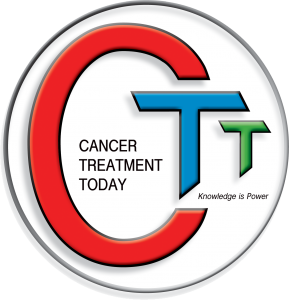Opioid management of sickle cell crisis – pro
Opioids remain the common treatment of acute and chronic pain in SCD.1 Because opioids are required in comparatively larger doses and for longer duration compared with those used for analogous pain in other conditions, optimizing benefits and minimizing adverse effects are critical in SCD. Darbari et al demonstrated increased clearance of morphine in patients with SCD, which may contribute to the increased opioid requirement to treat pain in SCD.53 Mechanisms and nonanalgesic effects of opioids in SCD have been reviewed by us in detail in another review and are summarized here (Figure 2).18 Opioids adversely alter red blood cell (RBC) deformability, dehydration, rheology, and membrane structure. These observations suggest that drugs targeting signaling pathways/RTKs, in combination with opioids, may offer the potential to improve opioid analgesia and reduce adverse effects. The knowledge gained thus far has provided the directions for future efforts to improve pain treatment in SCD. It is critical to understand how these mechanisms interact with each other and the relative contribution of each to sickle pain. Several mechanism-based agents identified thus far warrant testing in clinical trials. On the basis of the side effects and signaling pathways activated by opioids, cotreatment strategies of opioids with pharmacologic adjuvants and/or complementary and integrative medicine approaches are required to reduce opioid dose and side effects. Strategies need to be developed to incorporate these novel strategies with standard treatment of SCD, such as hydroxyurea.” (Tran et al 2017).
“The main clinical feature of sickle cell disease is the ”acute painful crisis,’’ which often requires hospitalization.[2] The term “sickle cell crisis” is used to describe several acute conditions such as the vaso-occlusive crisis (acute painful crisis), aplastic crisis, splenic sequestration crisis, hyperhemolytic crisis, hepatic crisis, dactylitis, and acute chest syndrome. Other acute complications include pneumonia, meningitis, sepsis and osteomyelitis, stroke, avascular necrosis, priapism, and venous thromboembolism.[3] Rapid pain assessment and initiation of analgesia should be undertaken promptly. Depending on the degree and severity of pain, an analgesic administration can be given intravenously (IV) or intranasally. For patients who are not in severe pain and can tolerate oral medications, oral analgesics can be used. Generally, the type, route, and dose of the analgesic should be individualized to the patient. Most guidelines recommend early initiation of parenteral opioid analgesics, usually with morphine at 0.1 mg/kg IV or subcutaneously (SC) every 20 minutes and maintaining this analgesia with morphine at doses of 0.05 to 0.1 mg/ kg every 2 to 4 hrs (SC/IV or PO). Those with persistent pain benefit from a PCA pump. Close monitoring of vital signs including oxygen saturation should be maintained with frequent reassessments of pain severity or resolution.[8] If the pain is controlled, the patient may be ready for discharge with a home care plan and oral analgesia.[9] If the pain is uncontrolled despite the above treatment plan, consider hospitalization and the use of stronger forms of analgesia or higher doses titrated to the patient’s needs. Simple or exchange transfusion may be warranted.[10] LMWH tinzaparin has been found to shorten the course of pain. A randomized, controlled, double-blind study has suggested that the clinical effects of tinzaparin are due to its effect on cellular factors. No special monitoring is needed for once-daily dosing.[10] Adjuvant therapy includes hydroxyurea, antihistamines, anxiolytics, and antiemetics.[10] It is prudent to maintain adequate hydration and be vigilant in identifying other causes of pain that may need additional treatment.” (Borhade et al 2019).
“This type of pain is common. In the PiSCES study, almost one-third of adult patients experienced pain nearly every day,8 and up to 40% of children with SCD in one center were categorized as suffering from chronic pain.19 It is likely that many of the frequent attenders in emergency departments (EDs) are suffering from chronic pain as well as an acute painful vaso-occusive crisis.
The majority of adults and older children will have severe pain (pain score >7 on a 10-point scale) in the early stages of a hospitalized episode of pain. The most rapid reduction in pain score is during the early stages, followed by a plateau, and many patients still have a pain score >7 at time of discharge.51 Attempts to control pain completely are unrealistic and result in excessive analgesic dosing. Pain management aimed at reducing pain to a moderate level (4-6) is more realistic, and patients should be counseled that they may not be completely pain-free when discharged from the hospital.” (Telfer et al 2017).
PEER REVIEWED PUBLICATION/LITERATURE:
Borhade, M. B., & Kondamudi, N. P. (2019). Sickle Cell Crisis. In: StatPearls [Internet]. Treasure Island (FL): StatPearls Publishing; 2020 Jan-. Available from: https://www.ncbi.nlm.nih.gov/books/NBK526064/.
Telfer, P., & Kaya, B. (2017). Optimizing the care model for an uncomplicated acute pain episode in sickle cell disease. Hematology. American Society of Hematology. Education Program, 2017(1), 525533. doi:10.1182/asheducation-2017.1.525.
Tran, H., Gupta, M., & Gupta, K. (2017). Targeting novel mechanisms of pain in sickle cell disease. Hematology. American Society of Hematology. Education Program, 2017(1), 546555. doi:10.1182/asheducation-2017.1.546.
